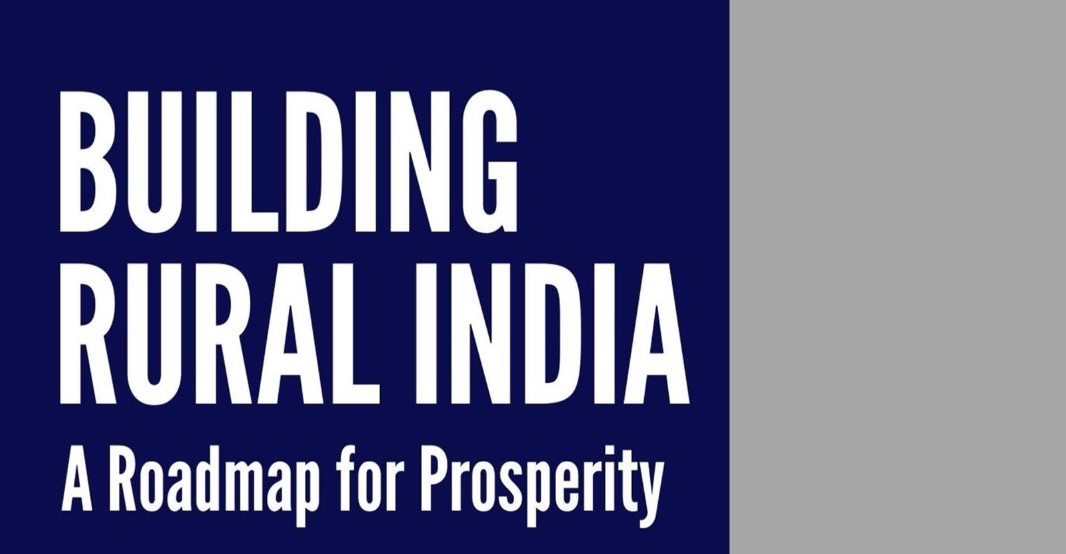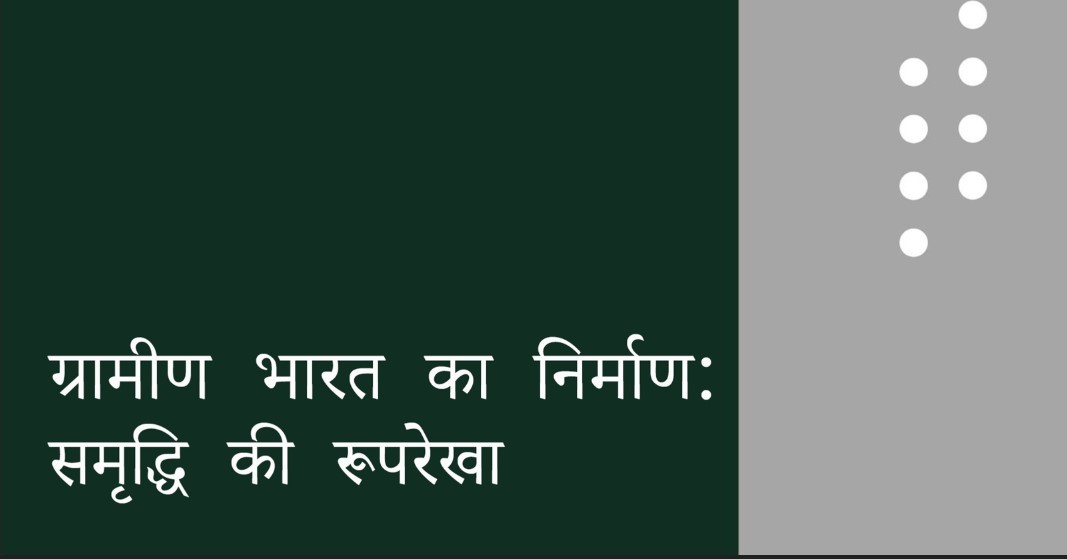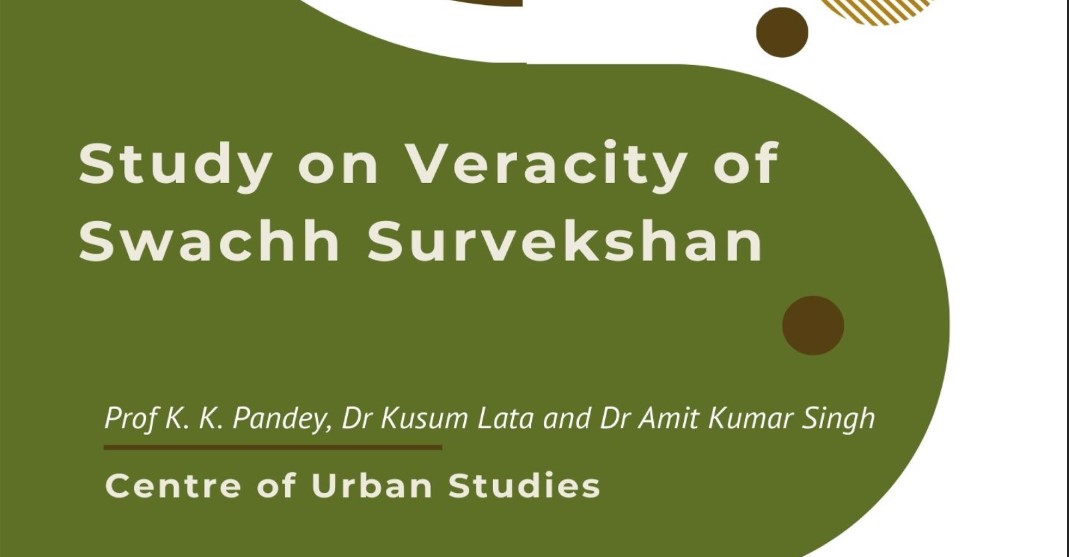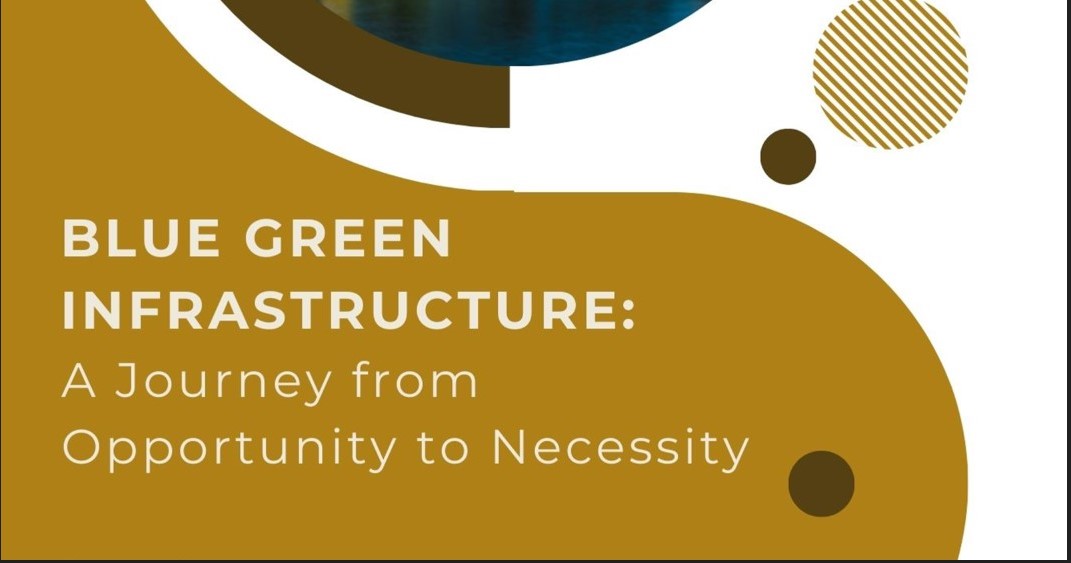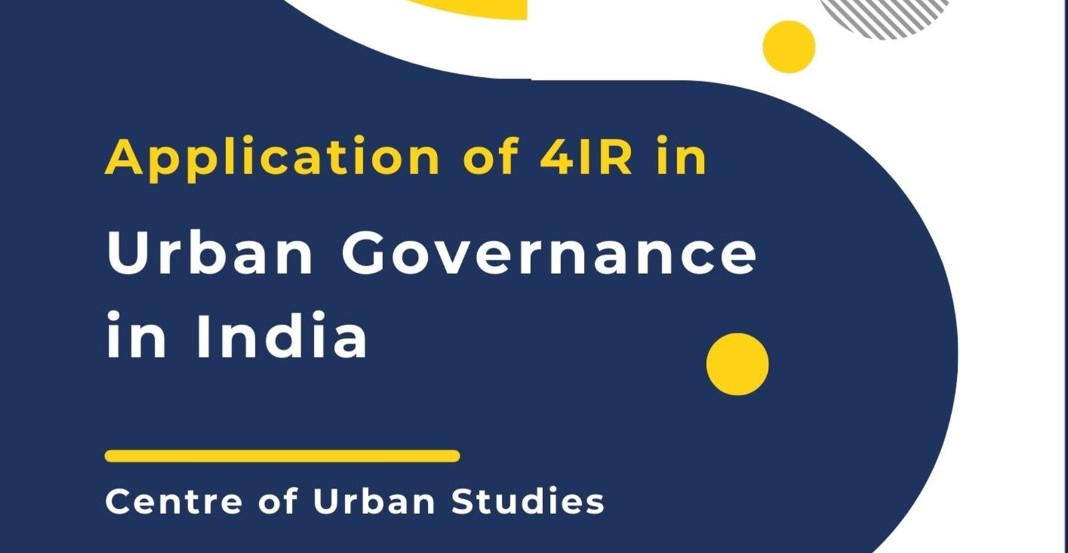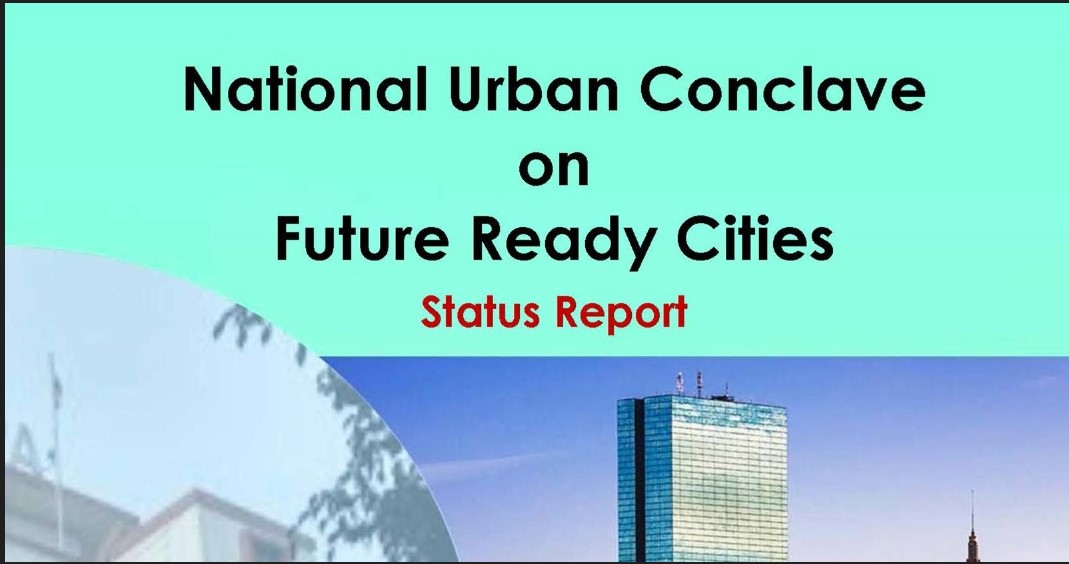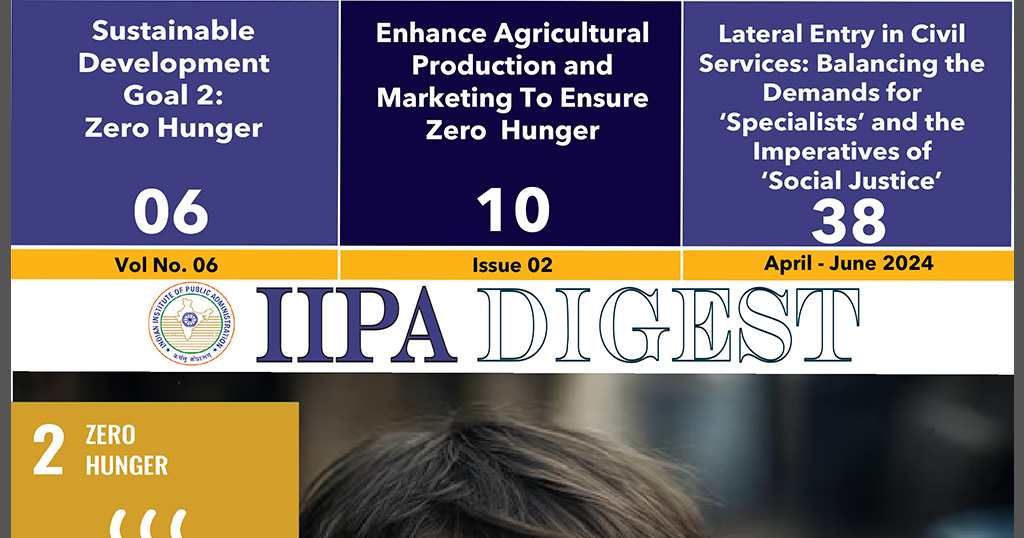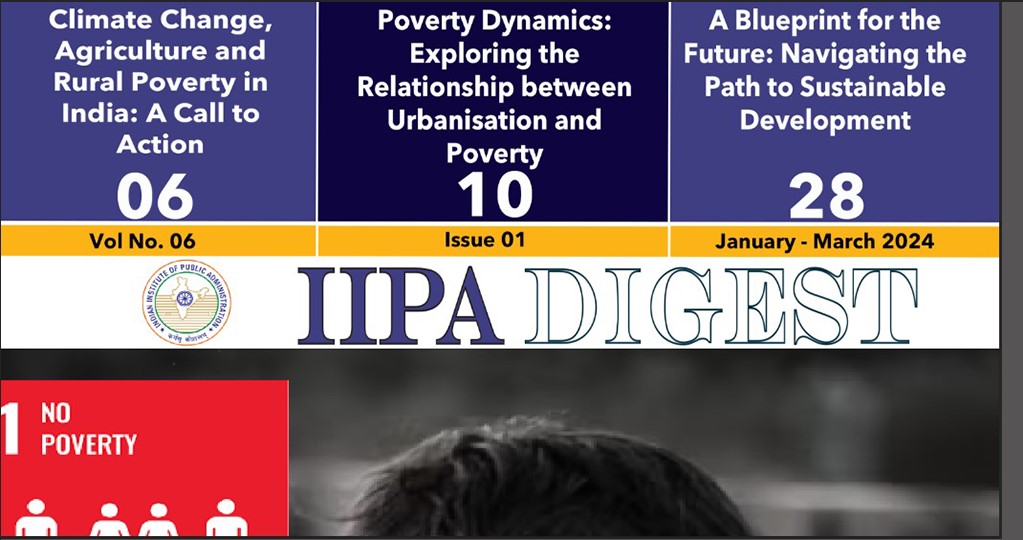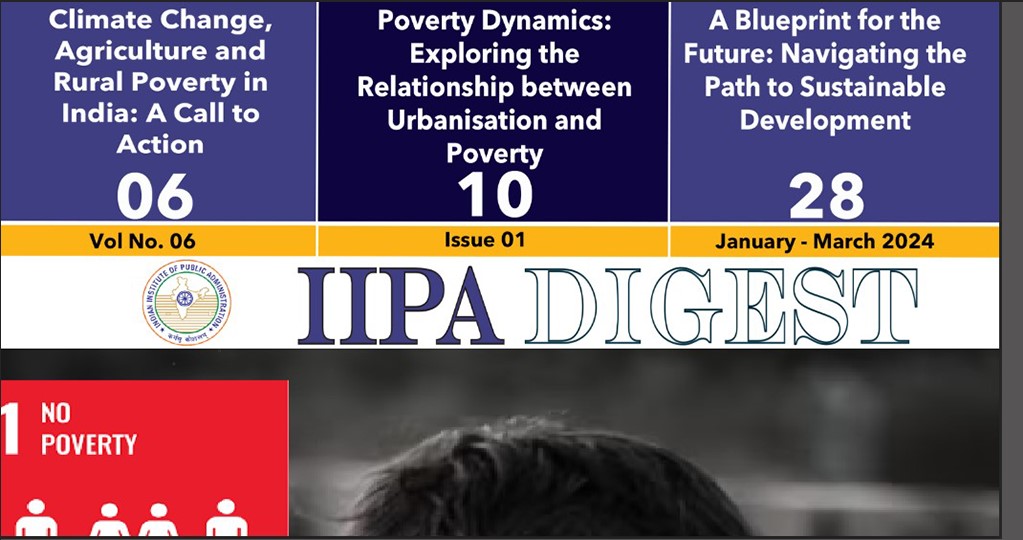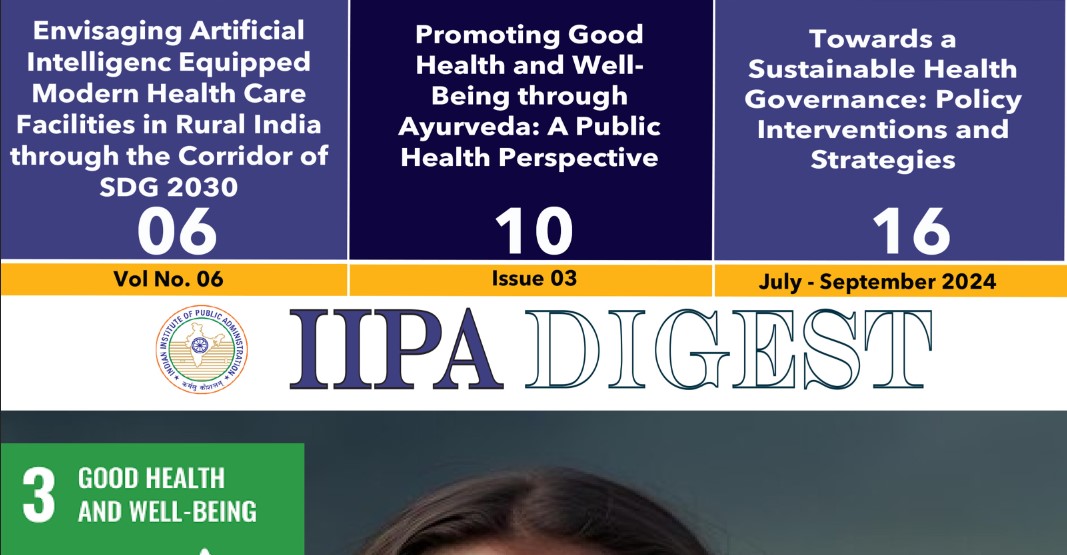Financing Rural Enterprises: Access, Innovation, and Risk Mitigation
Abstract
This chapter outlines strategies to bridge the India–Bharat divide through inclusive, innovative financing of rural enterprises. It covers difficulties faced by first-generation entrepreneurs, advances in alternative credit scoring powered by fintech, and the role of community institutions like Cluster-Level Federations (CLFs). The chapter examines guarantee mechanisms such as Credit Guarantee Fund Trust for Micro and Small Enterprises (CGTMSE), and presents adaptive “credit-plus” systems co-designed by NBFCs and fintechs. Added depth is provided through examples like Haqdarshak democratizing access to welfare services and Kinara Capital’s women-focused lending. Real-world engagement, quantitative insights, and mini-case studies underline the potential of integrated support systems. The chapter ends with policy recommendation aligned with the Building Rural India vision: inclusive financing that empowers dignity, participation, and sustainable prosperity.
Keywords: Rural Finance, First-generation Entrepreneurs, Fintech, Haqdarshak, Kinara Capital
Introduction
Rural enterprises are the economic heartbeat of Bharat, playing a critical role in enabling self-reliance, job creation, women-led progress, and dignified livelihoods. With over 68% of India's population residing in rural areas, financing rural enterprises is not just a development imperative but a strategic pathway to achieve national prosperity (World Bank, 2021). Despite the expansion of government schemes and institutional reforms, large sections of rural entrepreneurs continue to face barriers to formal credit, capacity support, and robust risk management.
According to the July 2025 Rural Economic Conditions & Sentiments Survey (RECSS, 2025), only about 51.6% of rural households exclusively use formal channels for credit, with a significant segment still dependent on informal sources such as moneylenders and relatives. This underscores the persistent divide where progressive policy design and institutional innovation must meet ground realities.
Global Findex 2021 shows 78% of Indian adults have an account and no gender gap in ownership, with rapid growth in digital payments usage (World Bank, 2021); yet translating access to accounts into productive enterprise credit is a separate challenge. A supply side hesitancy to underwrite cash flow-based loans, coupled with demand side gaps in documentation, scheme awareness, and market linkage, creates a financing trap
Further, the role of rural banking institutions, especially Regional Rural Banks (RRBs), has grown enormously in terms of business volumes and outreach. In FY23, RRBs recorded gross loans of ₹4.11 lakh crore (US$47.3B), with a consolidated net profit of ₹4,974 crore (US$572.5M). However, the challenge remains to translate this enhanced financial capacity into inclusive, grassroots economic development.
At the same time, India’s microfinance and MSME credit ecosystems have expanded sharply. The microfinance portfolio outstanding crossed ₹3.35 lakh crore with over 11 crore active loans by March 2025, and overall MSME commercial credit exposure reached ₹35.2 lakh crore by March 2025 with five-year low delinquencies (SIDBI & TransUnion CIBIL, 2025). These tailwinds supported by data sharing through the Account Aggregator (AA) framework (Sahamati, 2024) and guardrails from RBI’s Digital Lending Guidelines (Reserve Bank of India, 2022) create an enabling context to re architect rural enterprise finance around cash flow underwriting, community institutions, and digital rails.
Why Rural Enterprise Finance Matters Now
Rural India is home to a vibrant ecosystem of nano and micro-enterprises ranging from smallholder farms to local shops, artisans, and service providers. These businesses are the backbone of rural economies, generating employment and delivering essential services in areas where formal job opportunities are limited. Despite their significance, they continue to face a persistent gap in access to formal credit, relying instead on informal sources that are often expensive and unreliable.
India’s MSME sector has seen substantial growth, with commercial credit exposure reaching ₹35 lakh crore by March 2025(SIDBI & TransUnion CIBIL, 2025). Encouragingly, delinquency rates are at a five-year low, suggesting that these enterprises are largely creditworthy. Yet, the flow of formal credit remains concentrated in urban and semi-urban geographies and among established borrowers. This leaves rural entrepreneurs especially those in remote areas excluded from the financial system, underscoring the urgent need for inclusive financing at the last mile.
Fortunately, India’s digital public infrastructure has laid the foundation for transformative change. Initiatives like Jan Dhan, Aadhaar, UPI, and the Account Aggregator (AA) have created a robust ecosystem for financial inclusion. These tools enable even thin-file entrepreneurs those with little formal financial history to build digital footprints through everyday transactions. This visibility allows lenders to assess creditworthiness using alternative data, opening doors to formal finance for previously excluded groups.
Here’s how each component of India’s digital infrastructure contributes to financial inclusion:
India’s progress has been recognized globally. The World Bank’s Global Findex series documents the country’s rapid gains in financial inclusion and the widespread adoption of digital payments, even in rural areas. This surge in digital activity provides a rich data environment that can support innovative, data-driven lending models tailored to the unique needs of rural businesses.
The timing is critical. As rural communities recover from pandemic-related disruptions and face increasing climate-related challenges, building financial resilience is more important than ever. With digital infrastructure in place and fintech innovation accelerating, India has a unique opportunity to extend formal credit to the rural last mile, empower micro-entrepreneurs, and foster inclusive economic growth from the ground up.
To fully realize this potential, stakeholders must collaborate to design credit products suited to rural realities, leverage technology for last-mile delivery, and ensure supportive policy frameworks. Rural enterprise finance isn’t just a development imperative it’s a strategic lever for sustainable and equitable growth.
Credit Scoring for First-Generation Entrepreneurs
Traditional bureau-based scoring often misclassifies first generation entrepreneurs because it privileges length of credit history and collateral surrogates. India’s AA framework allows lenders (with user consent) to access bank statements, GST returns, and other financial information digitally, enabling cash flow underwriting even for thin file borrowers. The RBI’s digital lending guidelines require a standardized Key Fact Statement (KFS), direct loan disbursal and servicing in the borrower’s bank account, and full fee transparency raising trust at the last mile. (RBI, 2022; DFS, 2024)
Alternative data models complement AA enabled financial data. For micro‑enterprises with limited formal records, underwriters can use verified surrogates such as digital payments intensity, utility bill payments, device/telecom stability, psychometric traits, and supply chain receivables. NBFCs like Kinara Capital operationalize such approaches via the myKinara app (Kinara Capital, 2024), which offers a one-minute eligibility check, multilingual interface, and 24‑hour turnaround using AI/ML driven decisioning, women focused ‘HerVikas’ products and pricing incentives and lighter documentation.
Programmatic scoring tied to government schemes further expands the frontier. PM‑SVANidhi’s progressive tranches of ₹10,000–₹20,000–₹50,000 and digital transactions incentives create a repayment history that can be ingested into lender models graduating street vendors to larger working capital lines with lower risk. Such credit escalators are an actionable template for rural producers, artisans, and service micro‑enterprises as well.
The Grameen Credit Score: Driving Inclusion
The Grameen Credit Score (GCS), introduced in the FY2025–26 Union Budget, integrates alternative data such as utility bill payments, UPI transactions, and participation in social welfare schemes. Preliminary results from pilot programs in Madhya Pradesh and Assam are profound: loan approval rates for first-gen SHG entrepreneurs jumped from 42% to 68% after GCS adoption, and average loan sizes rose by 65%. (Union Budget of India, 2025)
Table 1: Credit Scoring Impact on SHGs
Source: NABARD report,2025
This innovative scoring method not only increases financial inclusion quantitatively but empowers borrowers, boosting entrepreneurial confidence and economic agency.
Cluster-Level Federations (CLFs): The Community Engine of Credit
India’s rural economy is undergoing a quiet transformation, powered by women-led Self-Help Groups (SHGs) and their federated institutions. Under the Deen Dayal Antyodaya Yojana- National Rural Livelihood Mission (DAY-NRLM), SHGs are systematically organized into Village Organizations (VOs) and Cluster-Level Federations (CLFs) community-owned, legally registered entities that serve as the institutional backbone for rural financial intermediation and enterprise development.
CLFs are more than just aggregators of SHGs. They are grassroots financial hubs that bridge the gap between rural borrowers and formal financial institutions. By offering governance, financial services, and livelihood support, CLFs enable scalable, sustainable, and inclusive rural enterprise growth.
According to NABARD’s Status of Microfinance in India 2023–24, the SHG ecosystem has reached unprecedented scale:
• 1.44 crore SHGs are now savings-linked with banks.
• The outstanding SHG bank loan portfolio stands at ₹2.60 lakh crore (NABARD, 2025). This expanding base provides fertile ground for enterprise upscaling, especially when supported by CLFs that can graduate borrowers from group-based lending to individual enterprise loans.
CLFs play a multi-functional operational role in rural enterprise lending, reducing transaction costs for lenders while improving outcomes for borrowers. Their proximity to communities and embedded trust networks make them uniquely effective in the following areas:
Operational Roles of CLFs in Rural Enterprise Lending
Function Impact & Activities
a. Screening & KYC CLF cadres validate household identity, livelihood activities, and cash flows. They assist in assembling Account Aggregator (AA) consents, enabling secure sharing of verified financial data. This builds credible borrower profiles for lenders.
b. Origination & Onboarding CLFs organize credit camps with partner banks and NBFCs, batch loan applications, and facilitate documentation. This significantly lowers the cost per file for lenders and speeds up disbursement.
c. Credit-plus Delivery Beyond credit, CLFs offer training in bookkeeping, GST compliance, and digital literacy, and facilitate market linkages. Post-disbursement handholding improves enterprise survival rates and enhances loan utilization.
CLFs also play a pivotal role in financial literacy, grievance redressal, and doorstep support, which enhances borrower confidence and lender trust. Their ability to graduate SHG members from collective borrowing to individual enterprise loans is particularly transformative. By building credit histories through SHG-bank linkages, CLFs enable rural entrepreneurs to access larger, customized loans for business expansion.
In essence, CLFs are not just facilitators they are architects of rural financial ecosystems. They reduce acquisition and servicing costs for lenders, de-risk rural credit portfolios, and empower women-led enterprises to scale sustainably. As India aims to deepen financial inclusion and unlock the potential of its rural economy, investing in and leveraging CLFs is not just strategic it’s imperative.
Credit Guarantees in Rural Credit
In India’s journey toward inclusive economic growth, credit guarantees have emerged as a pivotal instrument to unlock formal finance for underserved rural enterprises. By transferring a portion of the credit risk from lenders to a pooled facility, these guarantees improve risk-adjusted returns and enable collateral-free lending especially for first-time borrowers and informal entrepreneurs who typically lack traditional assets or credit histories.
The Credit Guarantee Fund Trust for Micro and Small Enterprises (CGTMSE) has scaled significantly in recent years. In FY 2022–23, it approved guarantees exceeding ₹1 lakh crore, and continued to expand in 2023–24, cumulatively covering millions of micro and small enterprises (MSEs). This growth reflects the increasing reliance on guarantee-backed lending to democratize access to credit and stimulate enterprise development across India’s rural landscape. (SIDBI & TransUnion CIBIL, 2025)
For rural entrepreneurs, partial credit guarantees typically covering 50–75% of loan exposure can be transformative. When priced appropriately to reflect the underlying risk and tied to basic client protection standards such as transparent pricing, responsible lending, and grievance redressal, these guarantees can catalyze lending at scale without creating moral hazard. They allow lenders to extend credit to thin-file borrowers with greater confidence, while ensuring that borrowers are treated fairly and supported throughout the loan lifecycle. (CGTMSE, 2023; CGTMSE, 2024)
However, the effectiveness of credit guarantees depends heavily on their design. Guarantee fees should be calibrated to portfolio-level performance, with incentives for lenders who maintain low non-performing asset (NPA) ratios. For instance, institutions that source loans through Cluster-Level Federations (CLFs) or certified Producer Institutions which often have strong community governance and peer accountability should be rewarded with fee rebates. This encourages lenders to partner with grassroots organizations that can ensure better borrower selection and post-loan support.
The integration of Account Aggregator (AA) infrastructure adds another layer of sophistication. By enabling secure, consent-based sharing of financial data, AA allows near real-time monitoring of borrower cash flows and portfolio health. This facilitates early warning triggers for potential defaults and enables timely interventions, such as restructuring or working capital top-ups, before loans become stressed. Such data-driven oversight strengthens the guarantee system and reduces the likelihood of loss.
Moreover, convergence with existing government programs can amplify the impact of credit guarantees. Aligning them with schemes like PM SVANidhi, which supports street vendors, and state-level interest subvention programs can further reduce the effective cost of capital for rural borrowers. This makes formal credit not only accessible but also affordable, encouraging entrepreneurship and economic participation at the grassroots. (PIB, 2023)
Ultimately, credit guarantees are more than just a risk mitigation tool they are a strategic lever to build trust between lenders and rural borrowers, expand financial inclusion, and foster enterprise growth. When thoughtfully designed and embedded within India’s digital and community infrastructure, they can unlock billions in rural credit, support the graduation of borrowers from microcredit to enterprise loans, and fuel a new wave of grassroots economic transformation.
Credit-Plus with NBFCs and Fintechs
Credit alone is insufficient for rural entrepreneurs. Survival and growth demand more than just capital they require working capital discipline, market access, and compliance support. This is where “credit-plus” models come in, combining finance with execution capabilities to build resilient enterprises. NBFCs and fintechs, when partnered with grassroots institutions, can deliver these layered services efficiently and at scale.
Haqdarshak, a social enterprise, exemplifies this model. It helps citizens and micro-entrepreneurs access over 7,500 government schemes through a tech platform and a trained network of last-mile agents 60% of whom are women. To date, Haqdarshak has unlocked over $2.1 billion in benefits for underserved communities, improving cash flow and resilience while empowering agents with income, digital literacy, and social recognition. In Chhattisgarh, a women’s SHG supported by Haqdarshak accessed a subsidized ₹10 lakh loan under the Krishi Yantra Anudan scheme, purchased a community tractor, and now earns steady income benefiting both providers and users. (Haqdarshak Empowerment Solutions, 2024)
Kinara Capital, an RBI-registered NBFC, uses proprietary cash-flow-based underwriting to serve MSMEs in Tier 2–3 towns. Its HerVikas program has disbursed over ₹1,200 crore in collateral-free loans to more than 13,700 women entrepreneurs across 100+ cities, supporting 37,000 jobs 33% of which went to women. Benefits include a 1% interest discount, 50% lower processing fees, and a 60-day repayment holiday, making credit more accessible and affordable. Their document-light, fast-disbursal approach illustrates how NBFCs can responsibly serve first-generation entrepreneurs in small towns and rural fringes, often in partnership with local anchors. (Kinara Capital, 2024)
These models work because each partner brings complementary strengths. NBFCs contribute risk appetite and product flexibility. Fintechs and social enterprises offer last-mile discovery, data infrastructure, and workflow tools. CLFs (Cluster-Level Federations) provide community trust, borrower screening, and collections support. Together, they compress cost-to-serve and improve portfolio quality, enabling lenders to reach thin-file borrowers with confidence and accountability.
A Design Blueprint for Rural Enterprise Lending
Origination, Underwriting, and Disbursal
Credit origination should begin with CLF-anchored sourcing, where Cluster-Level Federation (CLF) Enterprise Cells identify and pre-screen borrowers. These cells operate under DAY-NRLM guidelines, ensuring robust governance, MIS tracking, and grievance redress mechanisms. CLFs federate Self-Help Groups (SHGs) and Village Organizations (VOs), creating a trusted platform for financial intermediation and livelihood promotion.
Underwriting must leverage Account Aggregator (AA) infrastructure. With borrower consent, lenders can ingest 6–12 months of bank and UPI transaction data to build cash-flow curves and seasonality indices. In H1 FY24 alone, ₹129 billion was disbursed via AA-enabled lending, with average ticket sizes under ₹1 lakh ideal for micro-enterprises.
For thin-file borrowers, scoring should combine bureau data with AA insights and community references. Credit bureaus like CIBIL have revamped MSME scoring systems to include 36-month repayment histories and a 1–10 risk grading scale, improving access for low-document borrowers.
Product design should begin with ₹25,000–₹2 lakh working capital lines, with tenures of 3–24 months. Step-up limits based on repayment performance can incentivize discipline and support graduation to larger loans.
Risk Sharing and Capital Efficiency
Risk-sharing mechanisms must blend guarantees. For loans up to ₹10 lakh, CGTMSE offers collateral-free coverage with guarantee rates as low as 0.37% per annum. For MFI-style loans, pooled portfolio guarantees via NABARD or multilateral partners can be explored. Guarantee coverage should be calibrated typically 50–75% to de-risk first cycles and encourage lender participation.
All lending must align with RBI’s Digital Lending Directions (2025). This includes direct lender-to-borrower fund flows, transparent fee disclosures, auditable Lending Service Provider (LSP) roles, and standardized Key Fact Statements (KFS).
Credit-Plus Stack
Entitlement access is critical. Haqdarshak agents co-located at CLFs can screen borrowers for subsidies, insurance, and welfare schemes stabilizing cash flows and freeing working capital. Haqdarshak has unlocked over $2.1 billion in entitlements for underserved communities, with 60% of agents being women.
Women-led growth can be accelerated through Kinara Capital’s HerVikas program, which offers interest rebates, business coaching, and peer networks for women entrepreneurs transitioning from SHG credit to individual enterprise loans. Over ₹700 crore has been committed, supporting 37,000 jobs 33% of which went to women13.
Digital bookkeeping must be supported through mobile-first tools for invoicing, inventory, and GST basics. Platforms like BUSY and Marg ERP offer GST-compliant billing, auto e-way bills, and inventory tracking reducing cash leakage and improving lender confidence15.
Portfolio Health and Consumer Protection
Early-warning systems should monitor AA-enabled cash-flow dips and community signals such as missed SHG meetings or peer feedback to trigger support or restructuring options. This layered approach enables proactive risk management and reduces defaults16.
Dignified collections must be routed through CLF-supported, RBI-compliant channels. This includes time stamped communications via LSP platforms, embedded ombuds channels, and grievance redress mechanisms under the RBI Integrated Ombudsman Scheme.
Delivery Models
Model A: CLF Bank (CGTMSE-backed) “First-Enterprise Loan”
• Who: Mature CLFs (gold-standard governance) & a regional bank.
• Ticket/tenor: ₹50,000–₹5 lakh; 12–36 months.
• Data & scoring: AA bank-statement cash-flows, bureau & CLF references.
• Risk share: CGTMSE partial guarantee (where eligible).
• Credit-plus: Haqdarshak for entitlements; CLF trainings and market linkages.
• Rationale: Lowest cost of funds, scalable with strong risk buffers.
Model B: CLF NBFC (Cash-flow Lending) with Performance Step-Ups
• Who: CLF & NBFC like Kinara Capital (or similar cash-flow lenders).
• Ticket/tenor: ₹25,000 to ₹2 lakh, 3–18 months, stepped up on on-time repayment.
• Risk share: First-loss guarantee from philanthropic/corporate CSR pool until three cycles; optional portfolio guarantee thereafter.
• Credit-plus: Women-focused interest incentives, AA-based nudges on inventory cycles, and CLF-led coaching.
Model C: SVANidhi-style Progressive Tranches for Rural Services
• Who: Bank/NBFC, CLF & ULB/line departments (for licenses).
• Product: ₹15,000 - ₹30,000 - ₹60,000 progressive tranches tied to on-time performance and digital payment adoption.
• Why: Encourages formalization and cash-flow discipline among rural vendors and service micro-enterprises.
Case Studies
a. Haqdarshak at the “credit-plus” layer Haqdarshak is a social enterprise that bridges the last-mile gap in welfare access by deploying a tech-enabled platform and a trained agent network. These agents over 43,000 as of late 2024 have helped more than 6.68 million citizens and 84,000 MSMEs access government schemes, unlocking benefits worth ₹19,232 crore across sectors like health, agriculture, insurance, and financial inclusion. By integrating Haqdarshak services at the CLF level, rural borrowers can access entitlements such as subsidized loans, insurance, and skilling programs effectively reducing documentation friction and unlocking quasi-equity that stabilizes cash flows and enhances debt capacity. In partnership with Mastercard’s Strive program, Haqdarshak is scaling its impact to 500,000 small businesses and agri-entrepreneurs, with a goal of reaching 100 million end users by 2030.
b. Kinara Capital and women-led MSMEs Kinara Capital’s HerVikas program demonstrates how NBFCs can responsibly serve first-generation women entrepreneurs in small towns and rural peripheries. With collateral-free loans ranging from ₹1 lakh to ₹30 lakh, Kinara uses cash-flow-based underwriting and offers tailored benefits: 1% interest rate discount, 50% lower processing fees, and a 60-day repayment holiday. Since launch, HerVikas has disbursed ₹1,200+ crore to over 13,700 women-led MSMEs, supporting 37,000 jobs, 33% of which went to women. The program’s fast turnaround and vernacular support make it ideal for CLF partnerships, enabling SHG members to graduate into individual enterprise loans with confidence and support.
c. System-level traction matters The latest MSME Pulse report by SIDBI and TransUnion CIBIL shows strong momentum in the sector. As of March 2025, MSME credit outstanding reached ₹35.2 lakh crore, marking a 13% year-on-year growth, while delinquency rates (90+ DPD) fell to 1.79%, the lowest in five years. This improved asset quality, coupled with rising demand from new-to-credit borrowers (47% of originations), signals a conducive environment for guarantee-backed rural expansion. Lenders using comprehensive borrower profiles combining personal and business credit histories saw 40% better performance, validating the case for data-driven underwriting and blended finance models.
Quantitative Evidence Tables
Table 2
Note: Microfinance decline in Mar 2025 reflects seasonality and portfolio rationalization (SIDBI, 2025)
Table 3
Table 4
Risk Mitigation Architecture
A multi‑layer risk stack is essential. At origination, AA enabled cash flow analysis, verified digital invoices, and geo tagged asset photos reduce information asymmetry. During servicing, RBI mandated KFS and direct to bank disbursal reduce mis selling and leakage. At the portfolio level, segmentation by geography/sector, early warning signals from bureau and bank transaction trends, and CLF peer monitoring together keep NPAs contained. Industry data show microfinance NPAs moderating even as portfolios grew through 2024–25.
Guarantee structures provide the second line of defense: portfolio stop losses and dynamic guarantee coverage by risk band protect lenders against macro shocks. Finally, credit plus services (insurance enrollment, welfare stabilization, book keeping) cushion idiosyncratic shocks, especially in rural supply chains exposed to weather or price volatility.
Policy and Design Recommendations
a. Scale AA enabled cash flow underwriting in priority sector rural segments: States can co fund assisted AA camps via CLFs to help micro‑enterprises share bank/GST data with consent; lenders should reciprocate with thin file scorecards disclosed via KFS and grievance portals.
b. Make CLFs investible institutions: Provide multi‑year VGF and working capital limits tied to audited business plans and performance covenants; create a ‘federation rating’ that blends governance, repayment, and enterprise outcomes to unlock better bank terms.
c. Targeted guarantees for NTC women and youth led enterprises: Offer higher first loss coverage for verified CLF pipelines with declining coverage after 12 months of on time repayment; integrate with PM‑SVANidhi‑style progressive limits.
d. Institutionalize credit plus bundles: Mandate offer of basic insurance, UPI linked cash flow tools, and welfare eligibility checks in every loan journey via LSPs that comply with RBI’s proposed aggregator norms; compensate via outcome based interest subvention.
e. Open data and research: Publish district level dashboards combining CLF performance, guarantee utilization, and MSME portfolio health to steer public spending and private credit; support independent evaluations on repayment, income growth, and job creation.
Conclusion
Rural enterprise finance is transitioning from collateral first to cash flow first, from isolated loans to credit plus ecosystems, and from atomized borrowers to federated communities. Authentic, recent evidence points to strong foundations: improved MSME asset quality, deepening microfinance, maturing guarantee institutions, and powerful digital rails governed by clear prudential standards. The path to scale runs through CLFs as reliable community anchors, AA enabled scoring for first generation entrepreneurs and partnerships that bundle working capital with welfare, compliance, and market access. With targeted guarantees and transparent borrower protection, India can de risk growth for millions of rural enterprises while sustaining lender profitability.
References
1. World Bank. (2021). Global Findex database 2021. https://globalfindex.worldbank.org
2. SIDBI & TransUnion CIBIL. (2025). MSME Pulse report – March 2025 edition. https://sidbi.in
3. Sahamati. (2024). Account aggregator lending report – H1 FY24. https://sahamati.org.in
4. Reserve Bank of India. (2022). Guidelines on digital lending. https://rbi.org.in
5. Department of Financial Services (DFS). (2024). Account Aggregator framework. Government of India. https://financialservices.gov.in/
6. Kinara Capital. (2024). HerVikas program overview. https://kinaracapital.com
7. Union Budget of India. (2025). Budget speech FY2025–26. Ministry of Finance, Government of India.
8. NABARD. (2025). Status of microfinance in India 2023–24. https://nabard.org
9. CGTMSE. (2023). Annual Report 2022–23. Credit Guarantee Fund Trust for Micro and Small Enterprises. https://www.cgtmse.in/
10. CGTMSE. (2024). 24th Annual Report 2023–24. Credit Guarantee Fund Trust for Micro and Small Enterprises. https://www.cgtmse.in/
11. Press Information Bureau (PIB). (2023). PM‑SVANidhi promoting inclusive entrepreneurship. https://pib.gov.in/
12. Haqdarshak Empowerment Solutions. (2024). Impact report. https://haqdarshak.com
13. Ministry of Rural Development (MoRD). (2023). Annual Report 2022–23. Government of India.
Leave a comment
More articles from Urban & Rural Areas
